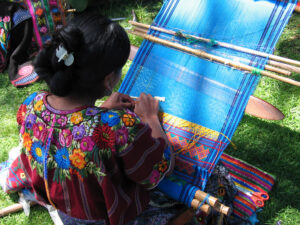The term Padmashali has a deep meaning in the Hindu culture. It was derived from 2 words Padma & Shali, Padma being lotus and Shali being weaver. It signifies the lotus that stems from Lord Vishnu’s navel (పద్మనాభం). It relays the message of how he is the weaver of lotus, which signifies maya. Padmashalis are predominantly Telugu-speaking people from the states of Telangana and Andhra, also some parts of Maharashtra.

Manusmriti is one of the prominent dharmashastras in Hinduism. It introduces Varnashram, a concept which categorizes society into 4 main classes, based on their professional duties – Brahmana, Kshatriya, Vaishya and Shudra. There is no documented proof to determine which varnam the Padmashalis belong to.

Nevertheless, Padmashalis wear Yagnopaveetham and observe strict adherence to the daily rituals such as Sandhya vandanam, vegetarian food (సాత్వికాహారం) etc. that are common to a Brahman/Kshatriya/Vaishya, who also wear this sacred thread.
They once weaved and traded cloth/fabric for a living, this includes saris worn by women as well as the clot h wrapped around God’s idols (పట్టు వస్త్రం).
h wrapped around God’s idols (పట్టు వస్త్రం).
